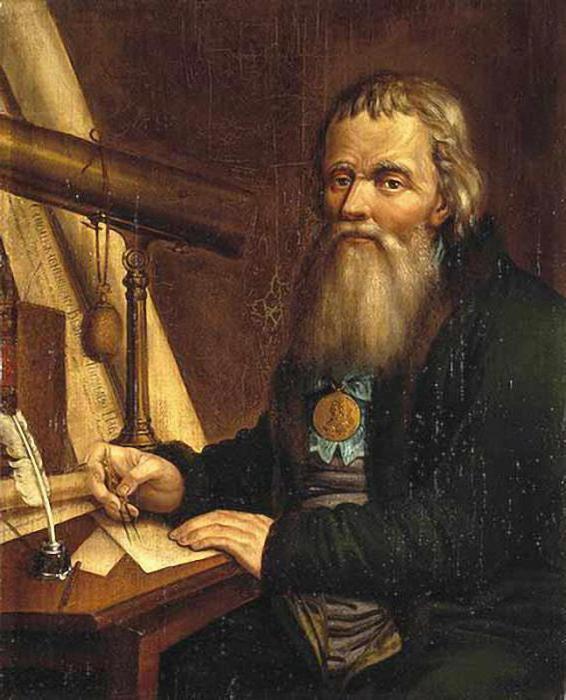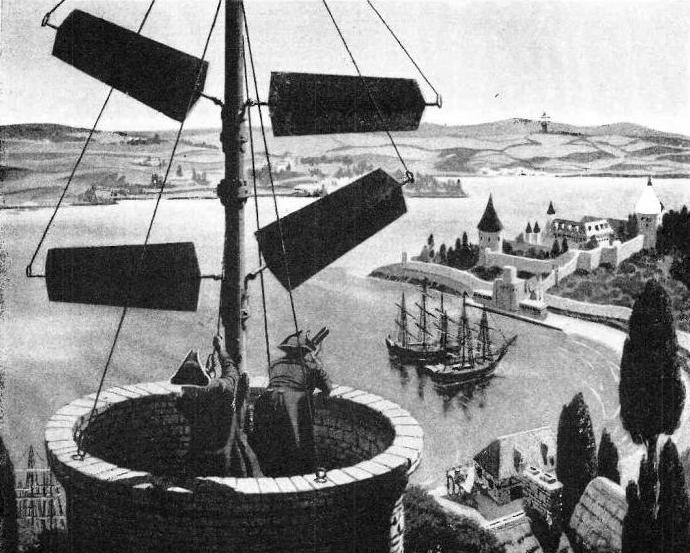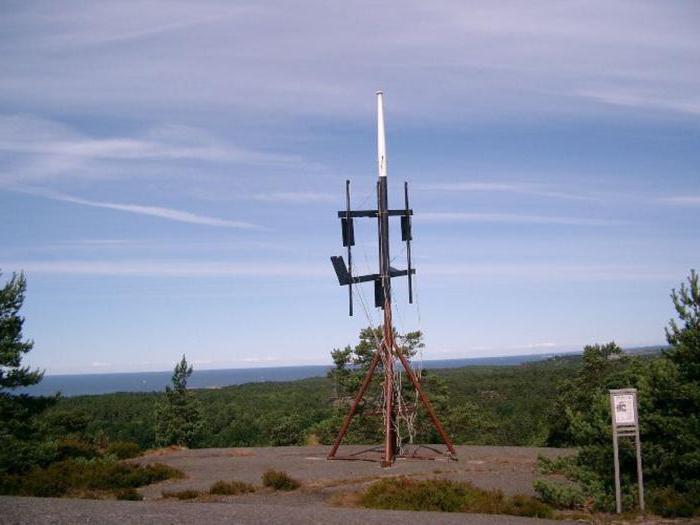Since ancient times, people have a need to keep in touch with each other. The first hunters began using animal horns and sea shells to transmit signals. They were replaced by sound devices such as drums, and later mankind began to use torches and bonfires. One of the first technical means can be called a water clock, the so-called clepsydra. These are communicating vessels that had markings with the names of teams. Communication in this case was based on the principle of synchronous visibility of teams. For a long time, people used traditional e-mail messages at that time. Evolution broke into the world of communications in the 17th century. It was then that society began to think about ways to speed up the filing of messages and the invention of communications. You will learn the history, principle of work and other interesting facts about the telegraph in the process of reading the article.
The first development of Robert Hook
An optical telegraph is a method of transmitting information using a system of mechanisms having articulated elements visible over long distances. The English maritime flag signaling, which existed in the fleet of King James II, is a prototype of this invention. The "first sign" of technological progress in the field of data transmission was born by the English inventor Robert Hooke. In 1684, he organized a demonstration of his design at the Royal Society. After this event, a publication appeared in the Proceedings of the English Royal Society describing the principle of operation of Hooke's optical telegraph. This invention was successfully used by sailors and was used in the Navy until the end of the 18th century. Soon, in 1702, Amonton at the French court arranged a presentation of his optical telegraph with movable levers.
The miracle machine of Ivan Kulibin
Russian researchers during the reign of Catherine II also carried out work on improving methods for transmitting information. In 1794, the natural scientist Kulibin Ivan Petrovich designed his "long-range warning machine." The invention constructively consisted of three wooden planks freely fixed on the axis of the timber, which, by the means of the blocks and ropes, could be installed in different positions to each other. The apparatus was equipped with mirrors and a lamp invented by Kulibin Ivan Petrovich with reflecting mirrors. The principle of operation of this telegraph was not much different from the Schapp apparatus. But, unlike the French counterpart, the Russian nugget scientist came up with his own original encryption system for individual syllables, not words. This machine could work at different times of the day and with little fog. This invention undoubtedly had an effect, but the Russian Academy of Sciences did not consider it necessary to allocate funds for the construction of a telegraph line. The telegraph model of Ivan Petrovich Kulibin was simply sent as an exhibit to the Kunstkamera.

The birth of the telegraph
The old idea of mankind about a new type of connection, the mention of which dates back to ancient times, could bring the brothers Shapp to life. For a long time, the Frenchman Claude Chappe worked on improving clepsydra. Although part of his experiments was successful, the inventor eventually abandoned these studies. In 1789, in France, Chappe showed in action a character-bearing apparatus, which he called a semaphore. A signal transmission was carried out at a distance of 15 km. This did not have the due success, but the scientist did not stop his development. Thanks to the continued support of his brother Ignatius, Claude Schapp is conducting a series of alterations of his invention. Already in 1794 he created a real long-range recorder. It is to his writings that we owe the appearance in everyday life of terms defining the means of communication, the new concept of "telegraph". The invention he made became the basis of the first effective information transfer system in the era of industrial progress.
Device and principle of operation
Like the Hooke optical telegraph, the Schapp brothers modernized design was equipped with a system of hinge-bolts fixed to the mast. The movable controller and the wings ending at its ends could change their positions thanks to the operation of belt drives and pulleys, thereby creating code figures. The wing length was 3-30 feet, their movement was carried out by two handles. The entire semaphore mechanism was placed on a structure similar to a tower, which was located in the field of visual line of sight. The work of the optical telegraph was as follows. An employee serving a semaphore watched a nearby station and duplicated the signal signs transmitted by a neighbor. So, from building to building were transmitted along the line of communication. Claude Schapp created a unique system of encrypted code-schemes, numbering 196 figures, in practice they were used only 98. The inventors wanted to equip the console elements with lamps for using the system at night, but soon found the idea unsuccessful.

First telegraph line
As patriots of their country, the French immediately appreciated all the advantages of the new invention and took it into service. The French National Assembly, after providing scientists with a description of the principle of operation of its optical telegraph, issued a decree on the construction of the first semaphore line. In 1794, the Paris-Lille telegraph line was built 225 km long. Thanks to Shapp's telegraph, on September 1, 1794, the world's first dispatch was received. It reported that the French army defeated the Austrians. It took only 10 minutes. Napoleon’s army widely used semaphore line networks to coordinate the movement of military units and transmit long-range command orders.
World travel
The Schapp brothers semaphore had one drawback: it was weather dependent. At night and with poor visibility it was necessary to suspend his work. But, despite this, the French invention rather quickly pleased people and took root in many countries of Europe, Asia and America. The first telegraph line opened in 1778. She connected the cities of Paris, Strasbourg and Brest. Already in 1795, the construction of optical telegraph networks in Spain and Italy began. Acquired semaphore lines and England, Sweden, India, Egypt, Prussia.
Solar telegraph
Here it is necessary to recall another invention. Claude Schaff created the heliograph in 1778. This mirror telegraph was designed by him to transmit messages between the Greenwich and Paris observatories. Information was transmitted by tilting the mirrors fixed in the frame by creating short flashes of sunlight reflections. By the way, light-signal heliographs are used at the present time.
Telegraph lines of Russia
The optical telegraph came to Russia a little later. The first telegraph line of the system of Major General F.A. Cosen was erected between St. Petersburg and Shlisselburg in 1824, its length was 60 km. This telegraph transmitted messages on the movement of shipping on Lake Ladoga, it was used until 1836. Under Emperor Nicholas I, a Committee was created whose task was to consider optical telegraph projects for use in construction in Russia. Many development options of foreign and domestic inventors were presented. We note several projects of Russian telegraphs: the systems of General L. L. Carbonier, P. E. Chistyakov. The telegraph project of the French engineer Chateau was chosen as the most appropriate. So, his telegraph system was used in the branches connecting Kronshtadt, Tsarskoye Selo, Gatchina with Petersburg. The longest line in the world (1200 km) is considered to be the optical telegraph line between St. Petersburg and Warsaw, constructed in 1839 and consisting of 149 stations up to 17 m high. A signal of 45 conventional signs along this route passed in 22 minutes. The service was carried out by 1904 operators.

Chateau Innovation
Structurally, the Chateau’s invention was somewhat simpler than Claude Chappe’s optical telegraph. The semaphores used one T-shaped arrow from three hinged rods. Short end elements had counterweights. All moving parts were equipped with flashlights. The figures were made by changing the position of the rods relative to each other. Thus, numbers, letters, and phrases were encoded. The inventor compiled a special decryption dictionary for the preparation of dispatches. The semaphore system of the engineer Chateau allowed to accept 196 positions, messages were transmitted in several encodings - official, civil and military. Management was carried out around the clock inside the building by four operators who regulated the rods with the help of winches and cables. Reflecting mirrors and lights were used in the system. All signals should have been regularly entered in a special journal, for a careless attitude to the work, the station employee could even go to jail. Citizens could use the telegraph lines to transmit optical telegrams, but this service was not cheap and did not gain popularity. The Chateau optical telegraph will be improved by A. Edelkranz, for which the scientist will receive recognition not only in his homeland in Sweden, but also in other countries.

The Rebirth of the Optical Telegraph
Science did not stagnate, research in the field of communications continued. By the middle of the 19th century, the system of electric telegraph networks was developing. In this regard, the optical telegraph has lost its relevance. But, although the leading place in the global communications system was taken by others, he found unexpected use for himself. The optical semaphore in the Navy is now one of the most common types of communication. The railway semaphore with its own system of light signal signs is still used. And, of course, we recall traffic lights on highways, the operation of which we observe every day.